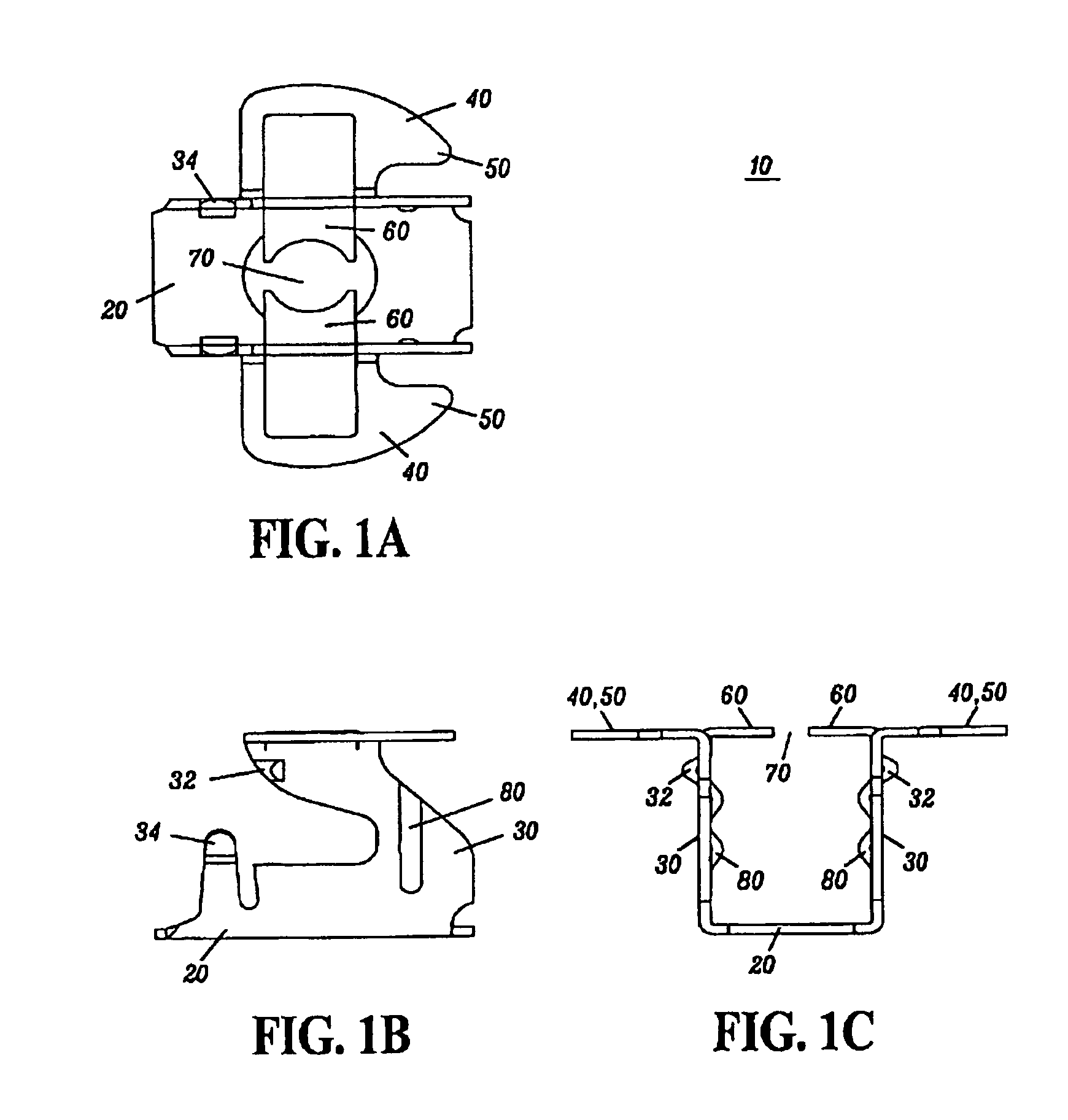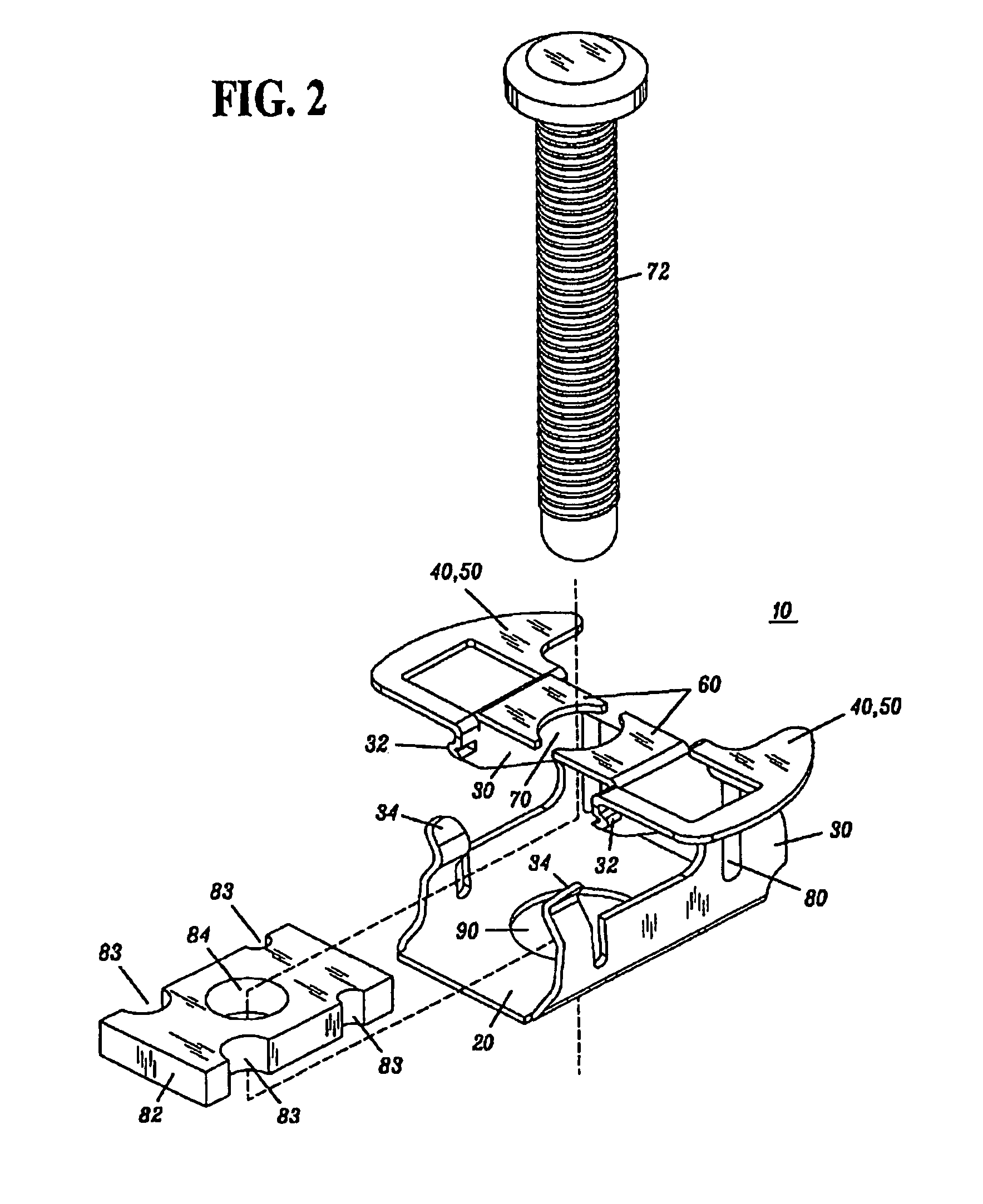Removable anchor and fastener
a technology of a bolt and a bolt is applied in the direction of screws, fastening means, pins, etc., which can solve the problems of difficult or impossible positioning of a nut in such a manner, difficult to hold the nut from turning, and difficulty in fastening a plurality of objects
- Summary
- Abstract
- Description
- Claims
- Application Information
AI Technical Summary
Problems solved by technology
Method used
Image
Examples
Embodiment Construction
[0014]An anchor facilitates blind engagement by a first fastener in order to connect an object to a hollow substrate. The first fastener may be a bolt, a screw, or any suitable fastener, such as a threaded fastener. The anchor may be inserted into a cavity accessible through a hole defined in the hollow substrate to connect the object to the hollow substrate. The anchor includes a base plate to hold a second fastener such as a nut and a pair of laterally offset arms extending from the base plate, such that each arm includes an engagement structure disposed at a distal end of each arm. The engagement structure includes a collar extending outwardly from each arm for engaging an outer surface, and optionally, an inner surface of the hollow substrate upon insertion of the anchor into the cavity. The engagement structure of each arm cooperatively supports the anchor and complementarily engages the first fastener. Additionally, the engagement structure includes a tang extending inwardly f...
PUM
 Login to View More
Login to View More Abstract
Description
Claims
Application Information
 Login to View More
Login to View More - R&D
- Intellectual Property
- Life Sciences
- Materials
- Tech Scout
- Unparalleled Data Quality
- Higher Quality Content
- 60% Fewer Hallucinations
Browse by: Latest US Patents, China's latest patents, Technical Efficacy Thesaurus, Application Domain, Technology Topic, Popular Technical Reports.
© 2025 PatSnap. All rights reserved.Legal|Privacy policy|Modern Slavery Act Transparency Statement|Sitemap|About US| Contact US: help@patsnap.com



